Interview with Trevor Von Eeden
Read the interview over at The Comics Journal (#298). Like the cover states, it's a brutally honest take on Von Eeden's early years, working at Marvel Comics, the demise of Thriller, his relations with Lynn Varley & Frank Miller, industry politics, racism, lawsuits, and much more. An excerpt can be seen at the original website of The Comics Journal.
Interview Extras
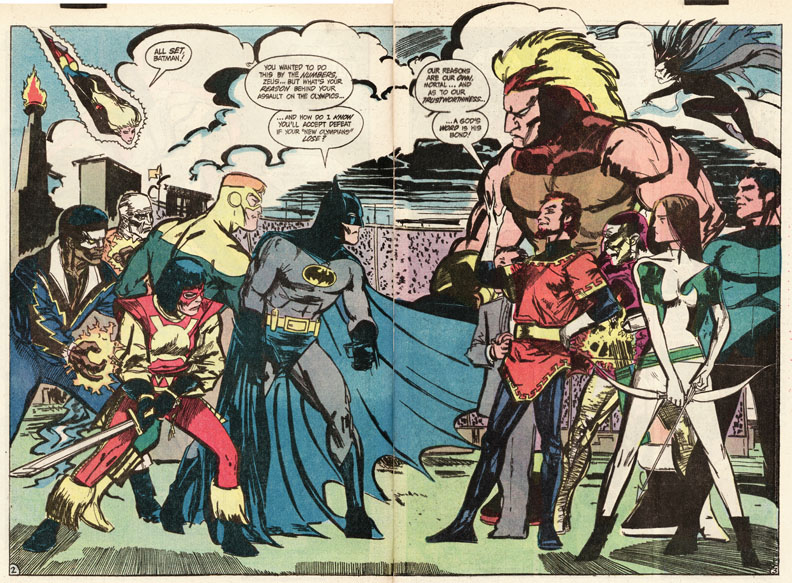
Batman & the Outsiders #14, written by Mike W. Barr, November, 1984.
Here are a few interview responses that were edited out from the final piece, a slew of artwork that complements the interview, and creator quotes by Mark Waid, David Mazzucchelli, Tony Isabella, and Erik Larsen. Major thanks to Johnny Bacardi for his help in connecting me with Von Eeden and for his fantastic Thriller website. Check out his side of the story.
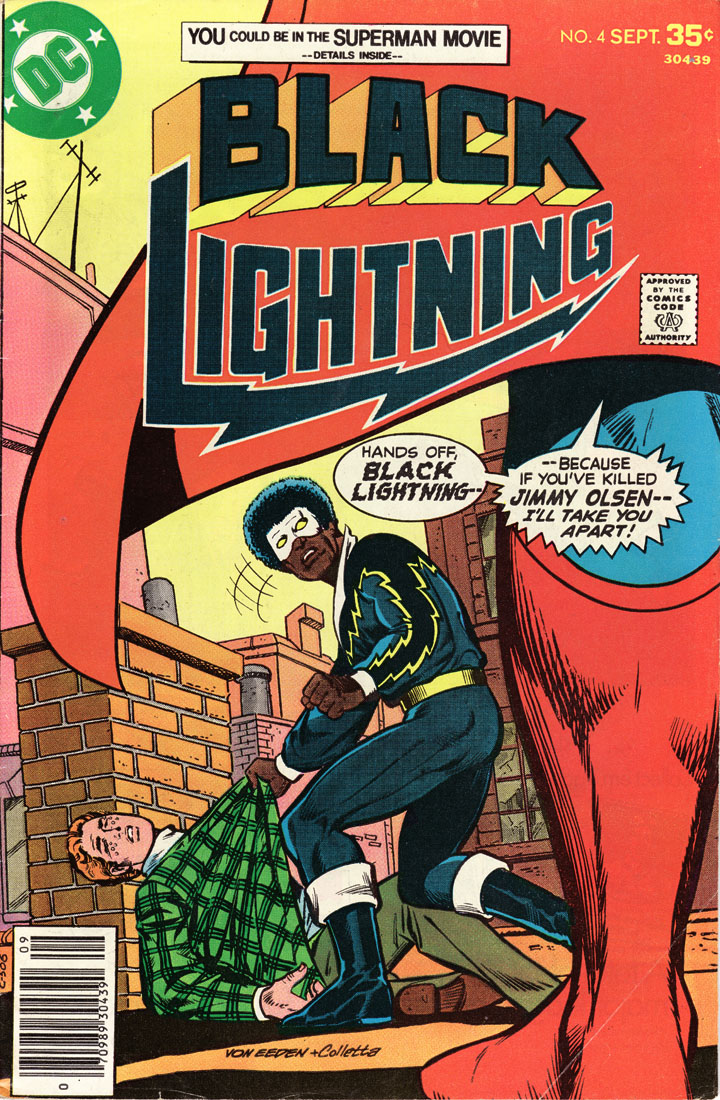
Black Lighting #4, September, 1977.
TONY ISABELLA:
"I was impressed by Trevor's enthusiasm and storytelling skills. His actual drawing was good, if not spectacular. He was never well served by his inkers on the title. There's no denying that he was a solid artist, especially for someone so young.
"His Thriller work knocked me out. It would have been challenging and fun to have done some Black Lightning stories with him around that time. And he just got better and better.
"When I started work on my second Black Lightning series - this was the preliminary work - I wanted Trevor to draw it. But I wasn't in contact with him and took DC Comics at their word. It's a mistake I seem to keep making. Now, obviously, I was delighted with Eddy Newell's work on my creation. If I were ever again writing Black Lightning, my dream team would be Trevor on the layouts with Eddy doing the finishes. It would look amazing!"

Batman Annual #8, written by Mike W. Barr, 1982.
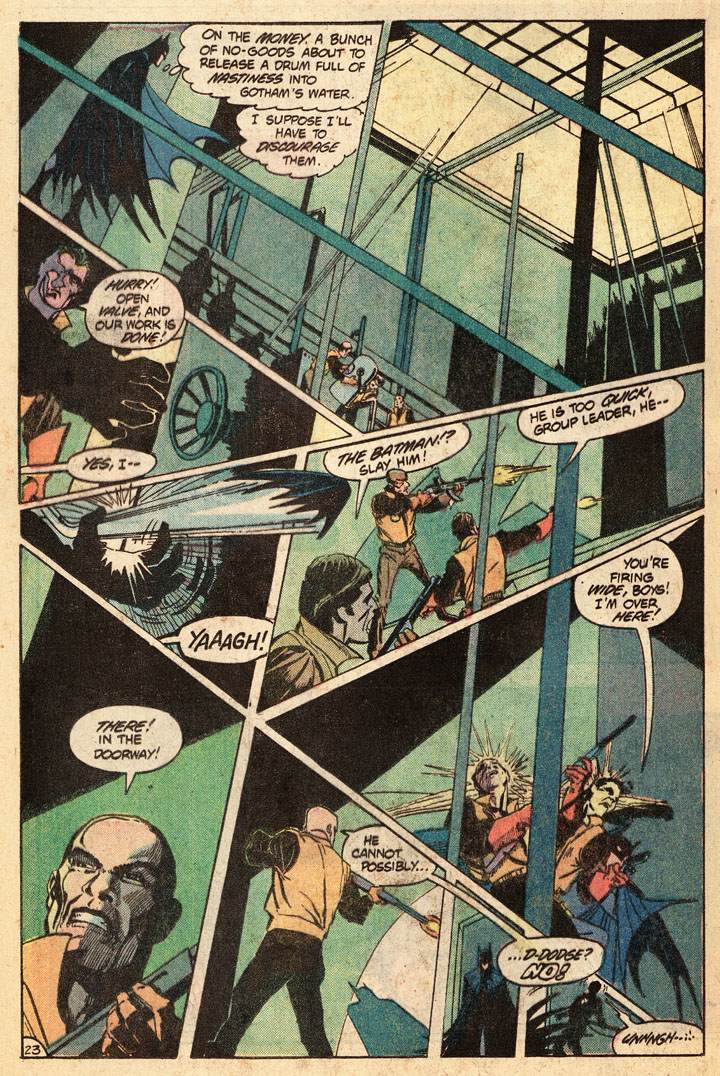
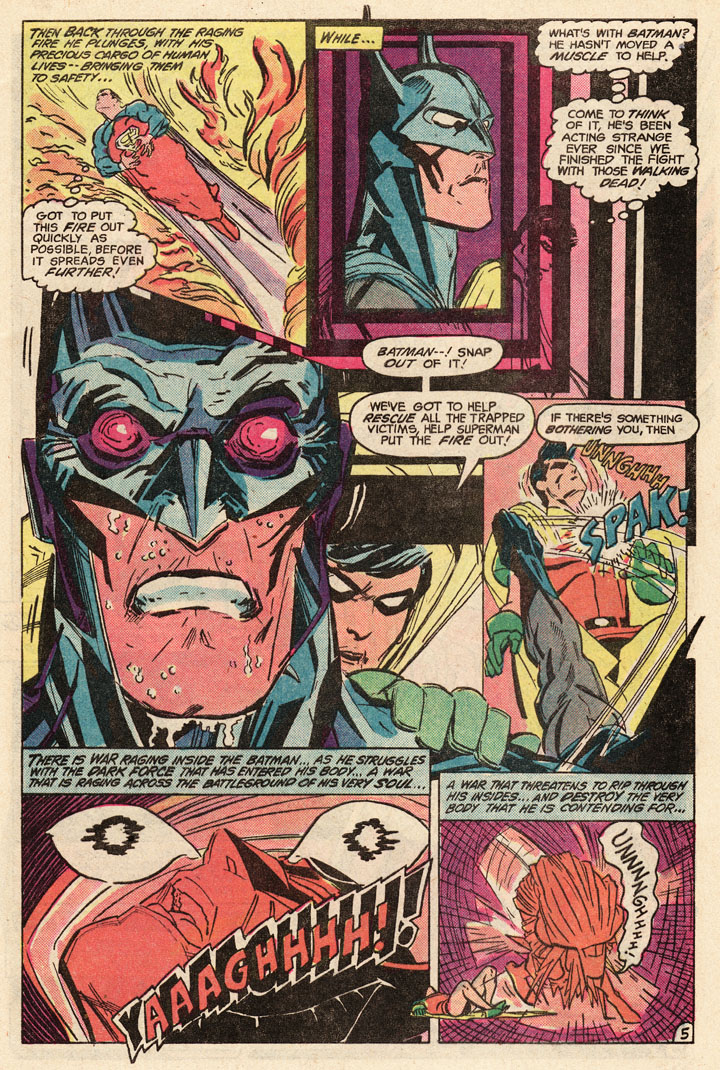
World's Finest #287, January, 1983. Written by Cary Burkett

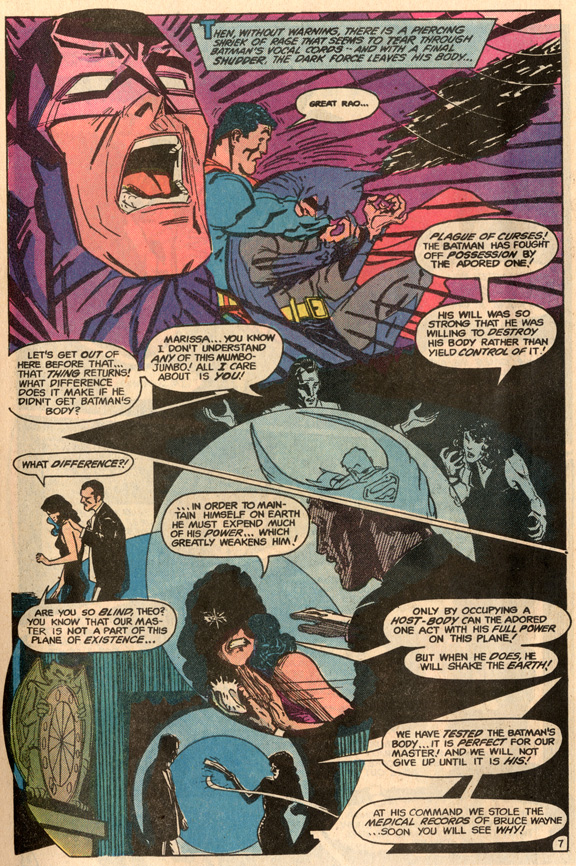
ERIK LARSEN:
"I never met Trevor (as far as I can recall -- he might have been one of a hundred people at a show but I don't have a strong mental image of having met him). I was told by the Outsiders' editor Andy Helfer that Trevor hadn't finished an issue of the Outsiders and I was asked to complete the issue and draw the splash "in his style" (the splash -- not the second half of the issue). I did it to the best of my ability -- which was pretty sorry, actually. Al Gordon and Steve Leialoha helped me ink my part of the story.
"I was a big fan of Trevor's stuff. I loved Thriller and I thought that Batman Annual he'd done earlier was brilliant. After he bombed out on that Outsiders job I didn't see his stuff for a while. When I did--it had lost something. It's hard to quite put my finger on it--but something had changed and his stuff looked like any number of other artists. His work had lost its uniqueness. I don't know if that was due to the inks or Trevor but I wasn't as taken with the later stuff."
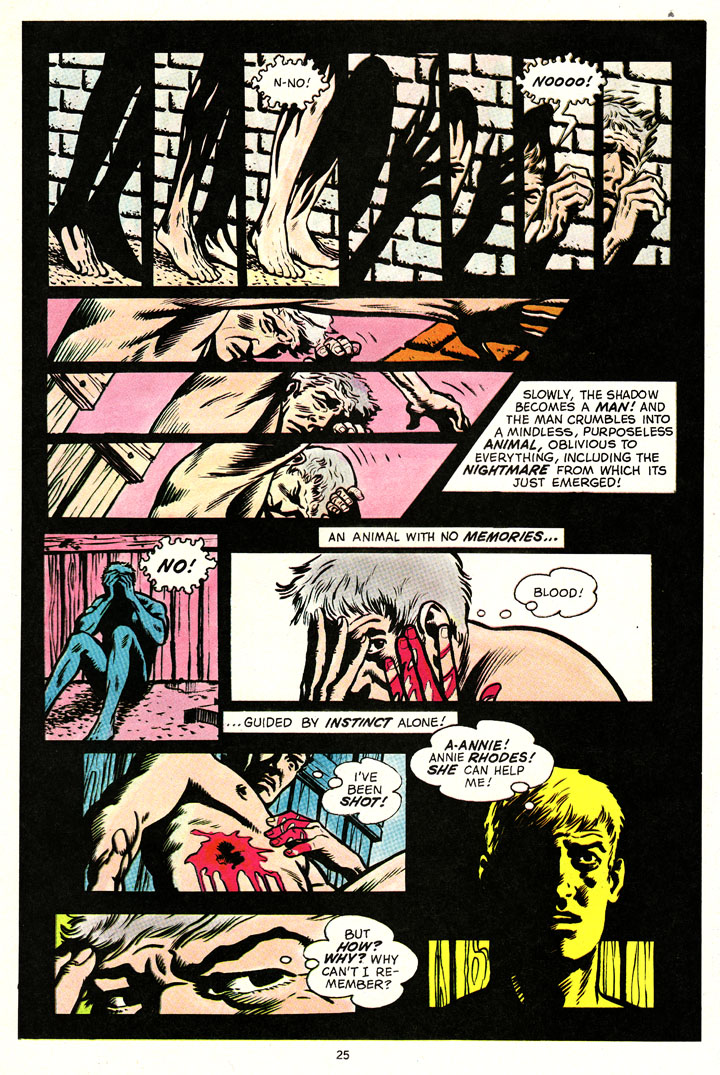
"The Weirdling" from Time Force #2, written by Bill Dubay and inked by David Lloyd, March, 1984.
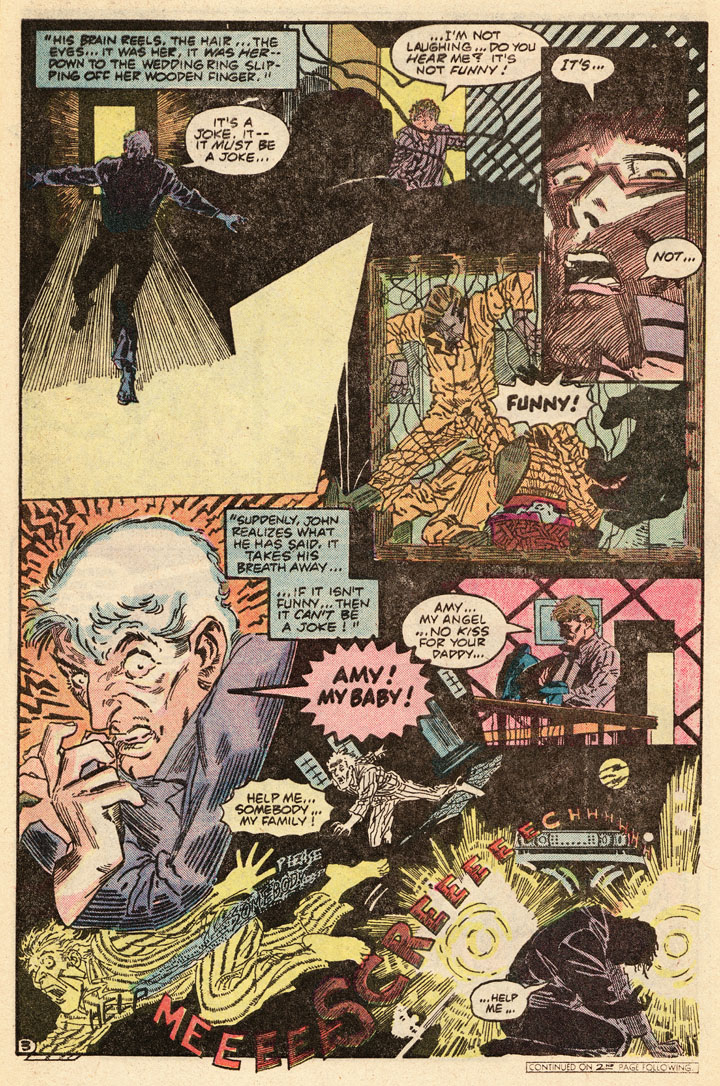
"Spring Out" from House of Mystery #316, May, 1983. This story marks Von Eeden's first collaboration with writer Robert Loren Fleming (this also marks Fleming's first professional comics writing job).
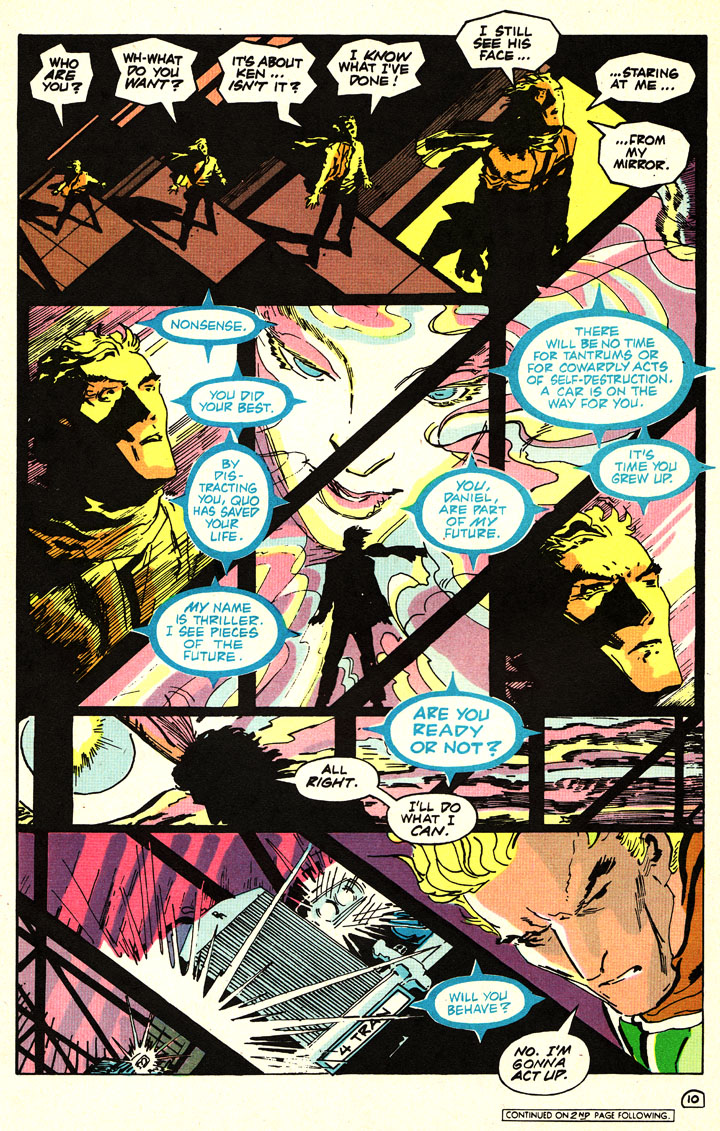
Thriller #1, written by Robert Loren Fleming, November, 1983.
MARK WAID:
"My first memory of Trevor's work was the impression he made on me with THRILLER #1, which I read until the covers fell off. I was at exactly the age where I needed to experience some new, quantum leap in comics storytelling, and that book was phenomenal--the work he and Robert Loren Fleming did on it was stunning.
"Once I became an editor at DC and realized I could actually HIRE Trevor, I was over the moon. At first, I really didn't have any assignments that might fit his style, but I'll never forget eventually talking him into doing an eight-page western for the SECRET ORIGINS anthology series. Eight pages. It took him two days. I know this because, both of those days, for whatever reason--because I was sitting on him to get it done, because he was between studios, whatever, I forget--he sat at the spare desk in my office and drew like lightning. Every couple of hours, I'd glance over at this quiet little man in the corner churning out gorgeous pages at a remarkable clip. I do remember he was working that fast because he was having to chase a check (times were tight for him, and I just now remembered that he--my hand to God--still owes me ten bucks), but if he cut any corners, I can't see 'em. What a pleasure, that guy. And what a talent."

World's Finest #305, written by David Anthony Kraft and inked by Pablo Marcos, July, 1984.
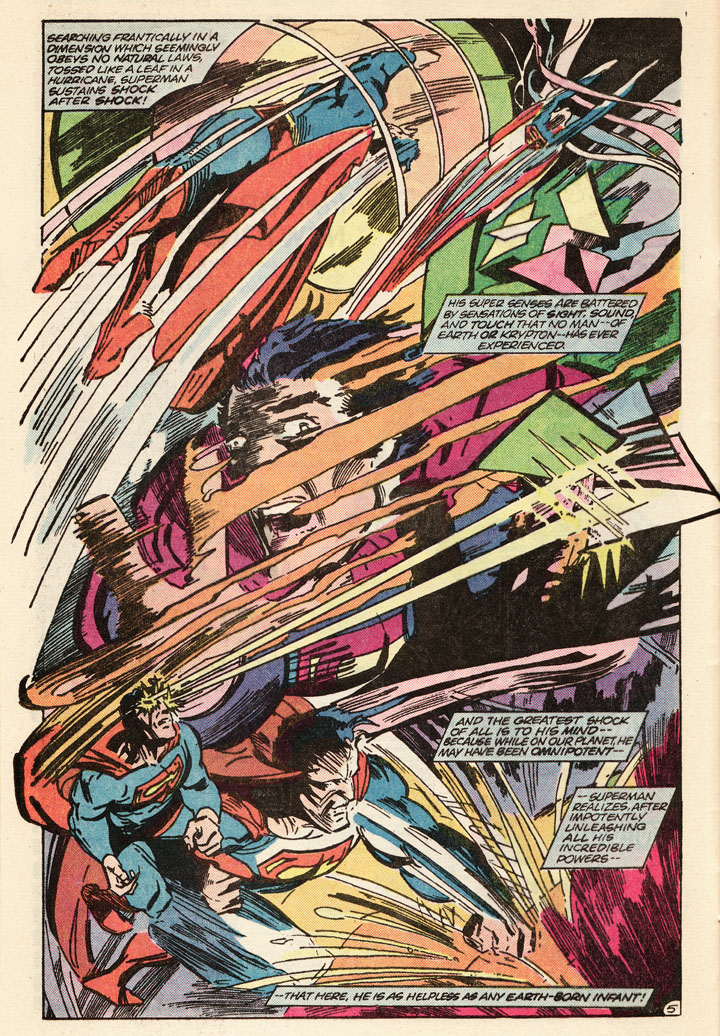
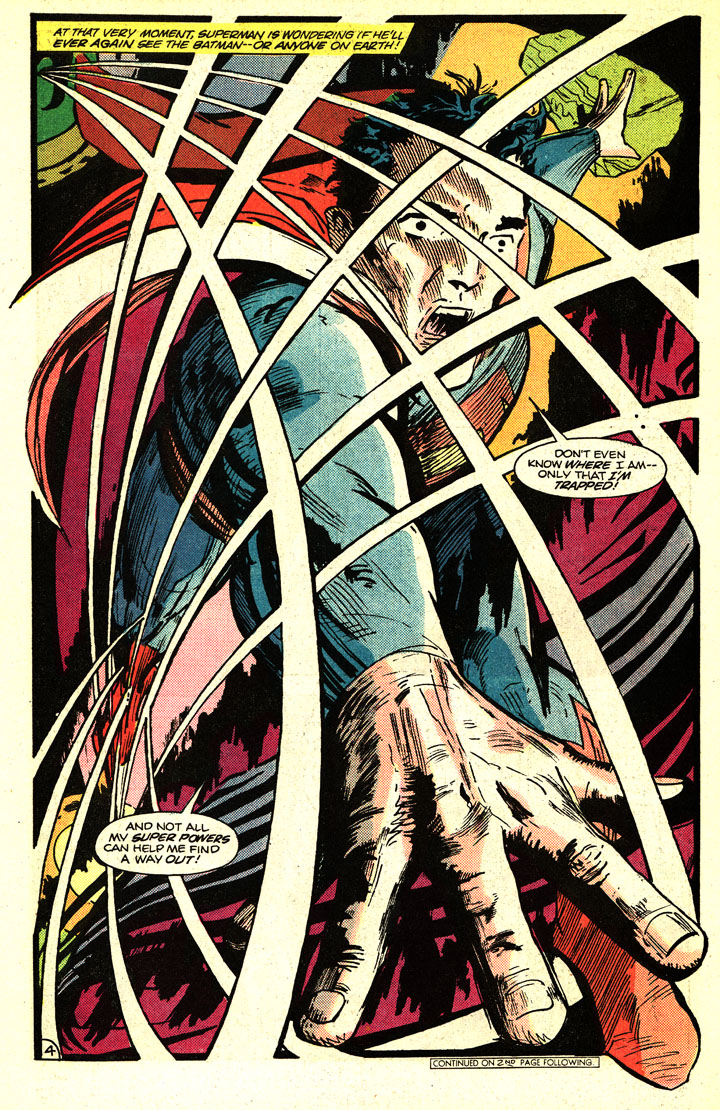
DAVID MAZZUCCHELLI:
"Back when I was starting out as a comics pro, I wasn't familiar with Trevor Von Eeden's work, but his issues of World's Finest (or maybe Thriller, but I think WF came first) really caught my eye. I was frankly astonished that these were "mainstream" books. The drawing was rock solid, but loose, almost scribbly, bold, and powerful; compositions were daring, challenging, sometimes bordering on incomprehensible. I felt like I was watching an artist in the process of bursting from a chrysalis "what would he do next?" I'd like to think that something of what excited me on those pages found its way into Batman: Year One, but my own work from back then seems mighty tame next to Mr. Von Eeden's."
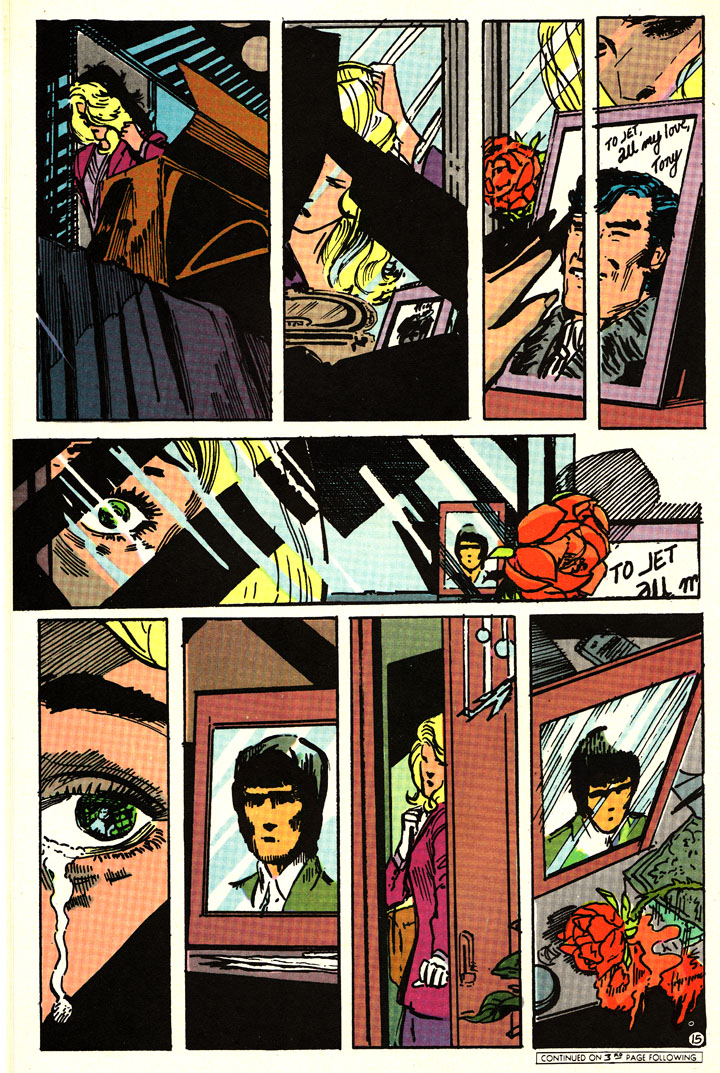
Thriller #7, written by Robert Loren Fleming, June, 1984.
In the interview, Trevor discusses his first meeting with Marvel Editor-in Chief, Jim Shooter, and his short stint at Marvel Comics. Below, Trevor recollects his favorite Marvel Comics as well as a few of his scattered marvel assignments.
TREVOR VON EEDEN:
"Jack Kirby and John Buscema's Thor, not to mention Conan (both Barry Smith's and John Buscema's), Fantastic Four (again, both Kirby and Buscema's), Avengers (the Kree-Skrull War saga lives in my memory to this day), Spider-Man, Hulk, Daredevil, Iron Man, Rawhide Kid, Two-Gun Kid, Kid Colt, Sgt. Fury, almost all of the 'Fear' and 'Monster' books... and of course, one of my eternal favorites, John Buscema's unique and immortal Silver Surfer, but to name a few."
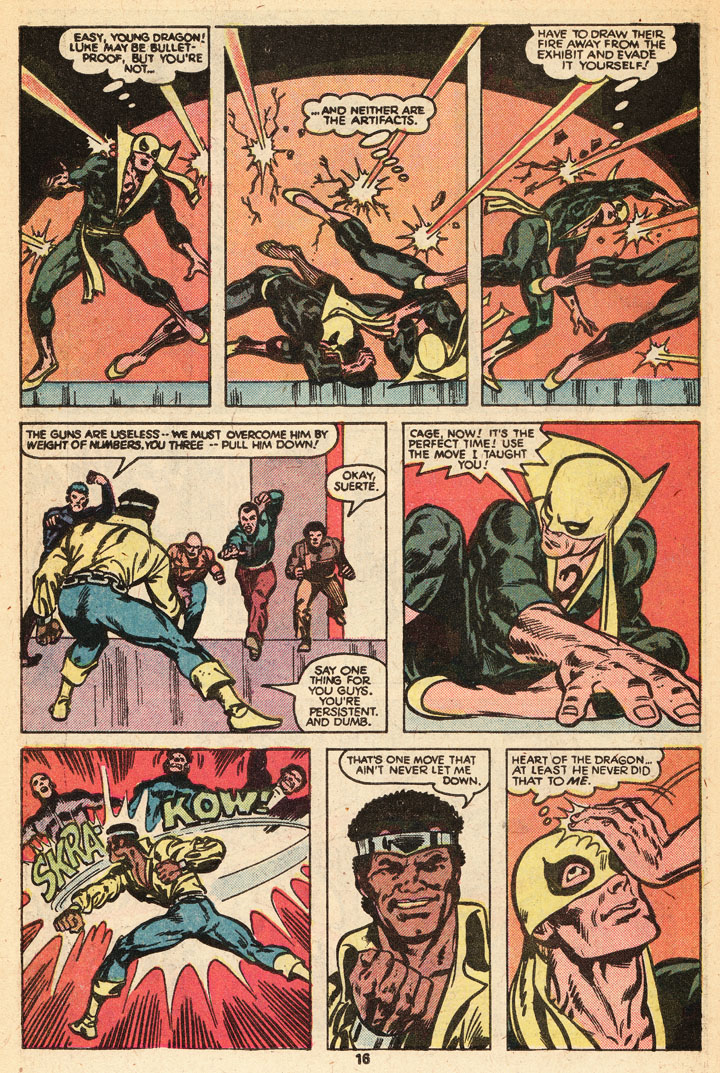
Power Man & Iron First #56, written by Mary Jo Duffy and inked by Frank Springer, April, 1979.
TREVOR VON EEDEN:
"Upon looking at my collection of the books I've done in my career, I was surprised to find out that besides the Power Man & Iron Fist books (#s 56-59) that I'd done immediately after meeting Shooter, I'd also done a few more that I'd COMPLETELY forgotten about! Also, that my tenure over at the former 'House of Ideas' spanned almost a year -- PM/IF, published in Feb. 1979, to SPIDER-WOMAN # 23 & 24, published in March 1980 -- and not the few months that it'd seemed, in memory. I do recall with certainty working at Continuity during the time I'd drawn the PM/IF books, though--since the face of the 'Mr. Preston' character, to whom Luke Cage is directly pointing on the splash page of #59 (and who'd appeared briefly in the previous issue) was directly taken from a photograph in one of Neal's reference files, over at Continuity. It was the first time that I'd ever done that--used a photo for a character's face--so that I DO remember, very clearly.
"There were also MARVEL FANFARE #s 2 and 3, done in '82. Both very mediocre jobs, as far as my work in them was concerned. And in both instances, the editors had gotten in touch with me, rather than the other way around. After 9/11, when the bottom dropped out of the world for the freelance artists over at DC, I did draw another job for Marvel. This was a time when work was almost impossible to get. It was an 11 page story about Sunfire (from the X-MEN) but he never wore his costume during the entire story. Had to do with him rescuing his uncle, who'd turned into a junkie, and was being exploited and held captive by rival drug dealers. This story was drawn and inked by me--but when it was published (X-Men Unlimited #34), the coloring on it was SO badly done, I almost threw up when I saw it. That was the last job I'd ever done for Marvel comics."
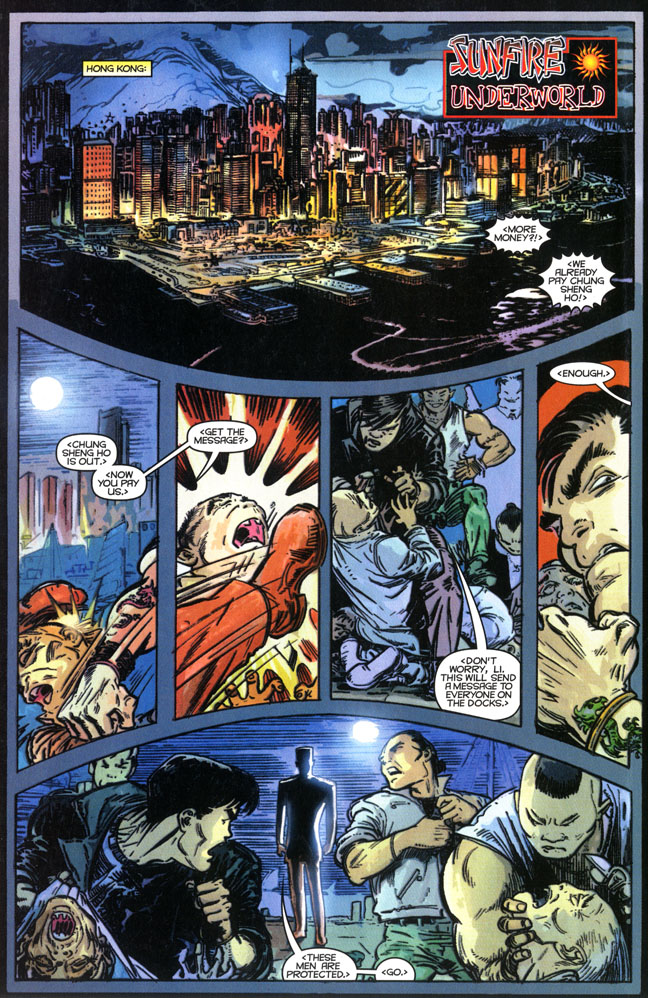
"Underground" (X-Men Unlimited #34), written by Steven Grant, June, 2002.
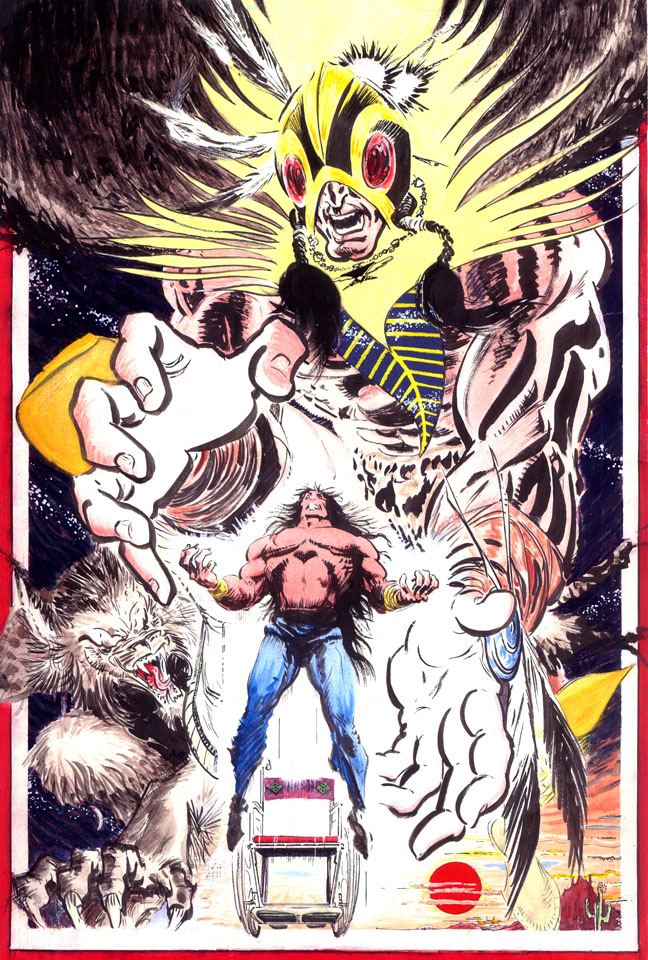
Marvel's Black Crow illustration for an aborted project.
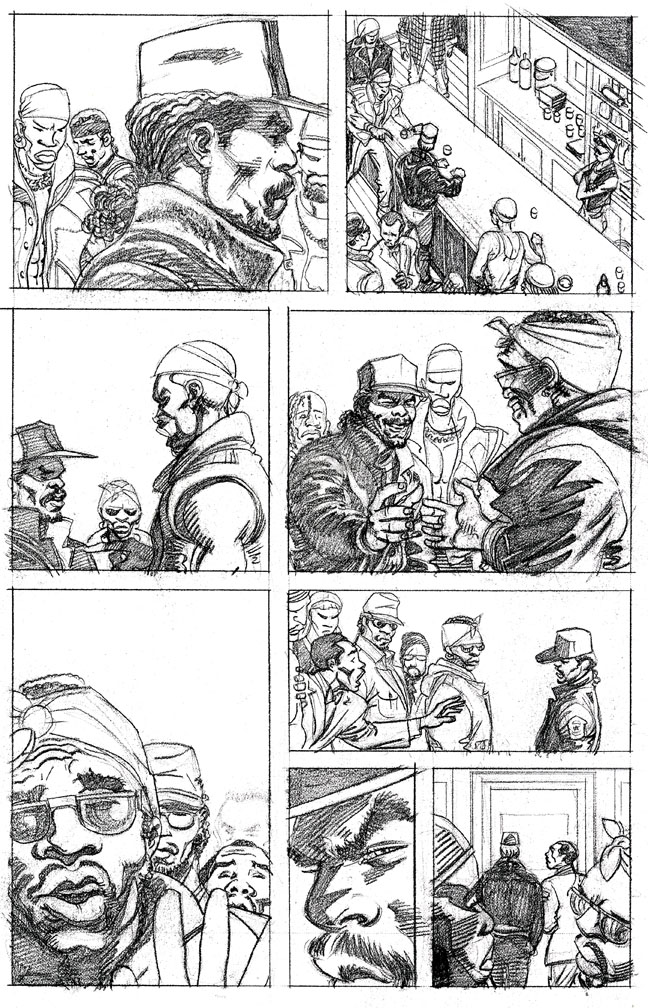
Also discussed in the interview is the near completion of an Ice-T graphic novel in the early 90s, written by Andrew Helfer for DC Comics. The project came to a halt when Ice-T/Body Count's controversial "Cop Killer" album made the news. Below is a page from the comic.
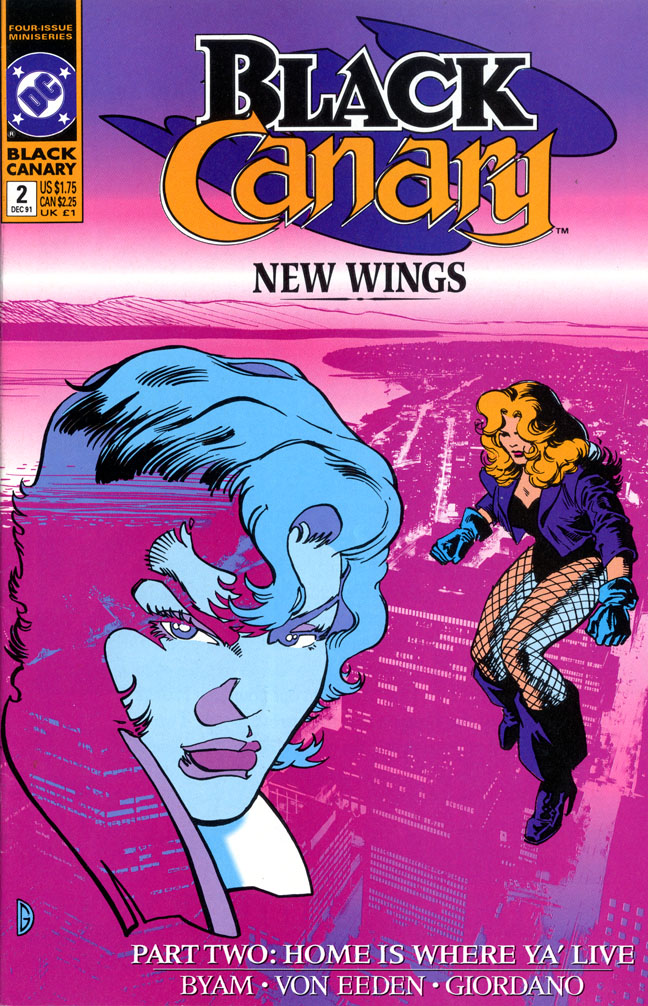
Black Canary (mini series) #2, inked by Dick Giordano, December, 1991.
MICHEL FIFFE: Your last and most extended run on any title was Black Canary from '91-'93, which was on one of the only female-led comics of its time. You were paired up with yet another relative newcomer, writer Sarah E. Byam. Considering your longer than usual stint on that title, what was the creative process for you and Sarah during her first big break?
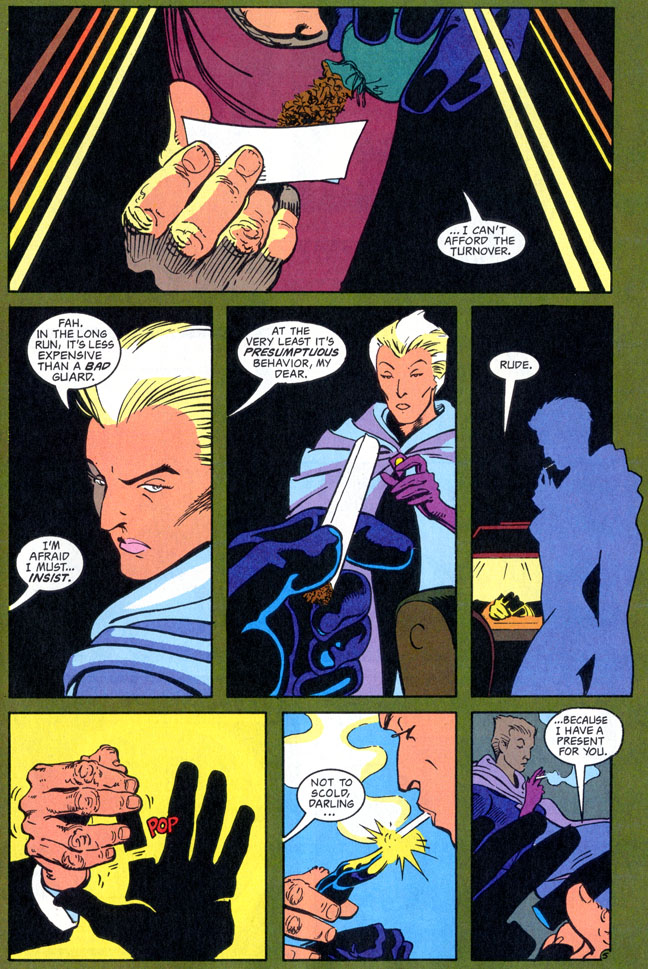
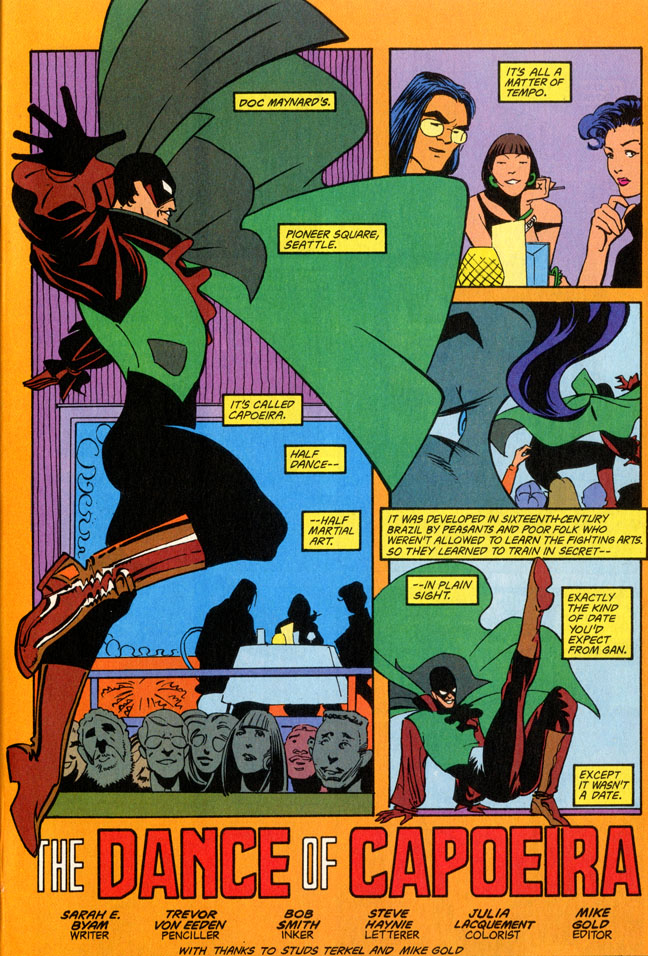
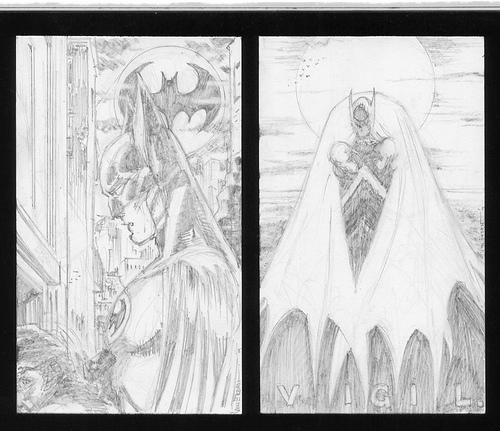
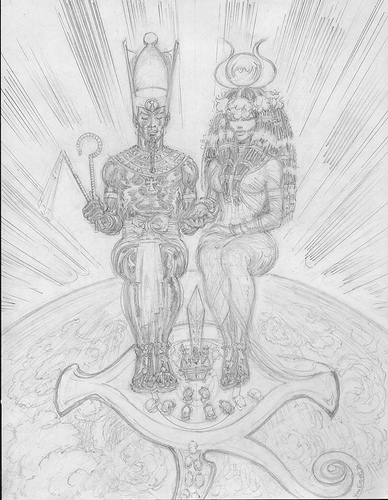

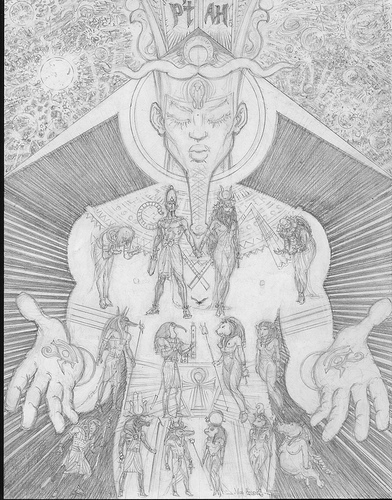
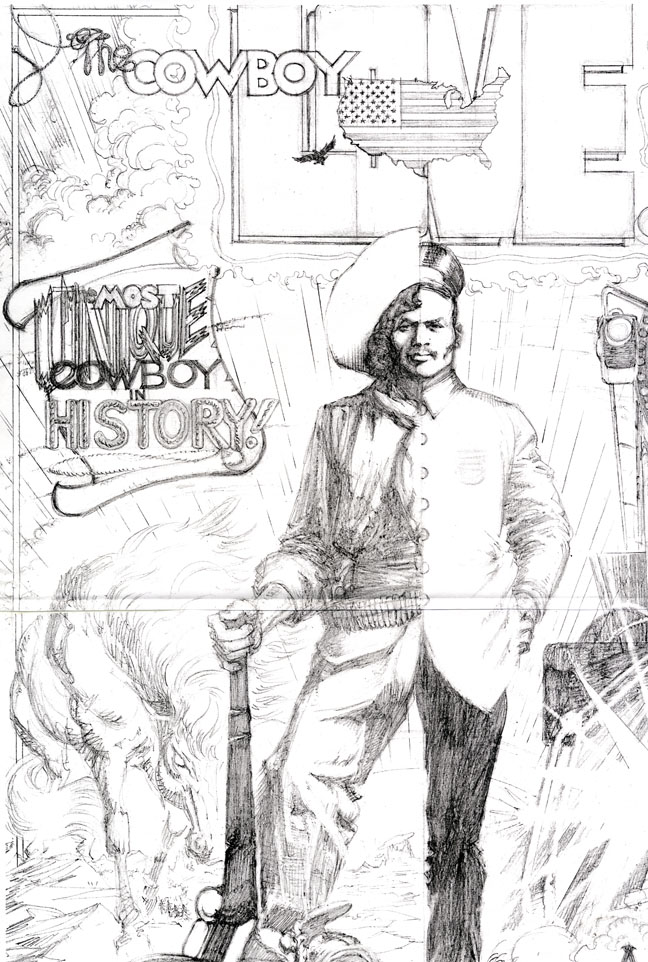
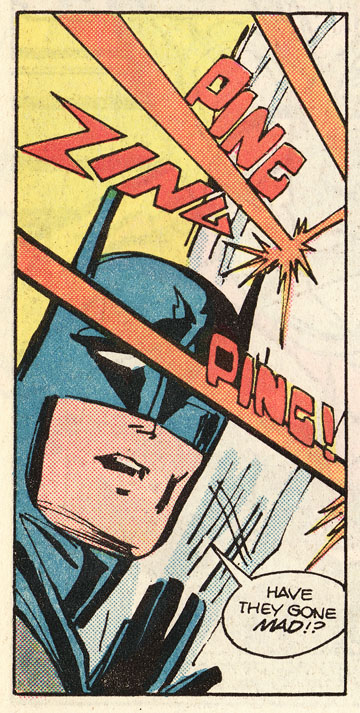
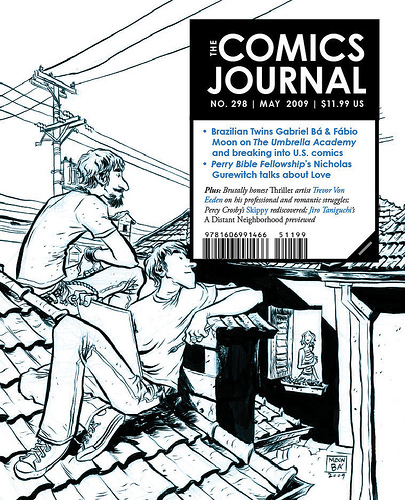
VON EEDEN: "Same as in all of my work for DC Comics -- little to no direct communication with the writer at all. I believe that Sarah Byam called me once or twice, and we spoke briefly over the phone, but my work at DC Comics was never collaborative in nature. I was interested exclusively in doing the work, not in 'networking'. I picked up a script, went home, drew it, and then handed it in. That's it. Thriller suffered when my creative fire, my enthusiasm, was doused after the 'chair collapsing' stunt that the DC editor had tried to pull on me. Although to this day, I still don't remember who'd sat behind that desk, insisting over and over again that I 'take a seat'. Maybe Alan Gold would remember, since he'd ended up literally 'taking the fall'.
"Black Canary, on the other hand, was done in one state of mind, from beginning to end, one of semi-interest, to tell you the truth. I didn't, and still don't, find her to be a particularly interesting character, merely a glorified sex object in fishnet stockings and a blonde wig -- the obvious embodiment of a shallow male sexual fantasy. The only thing that I did like about her was the fact that she was a martial artist. I loved drawing her in fighting action. That was the literal extent of what little joy I'd felt in drawing her adventures. Don't get me wrong -- I did my best, as I always do, despite whatever circumstances in which I find myself -- and if some fans were pleased with what I'd done, I'm very happy to have given them that pleasure. I'm merely being completely honest in telling you here about my state of mind, at the time that the work was done. My best, when created under a bad frame of mind, may still be pleasing to some, but when I'm truly excited and inspired by a project, my best is simply... supernatural, and that's what I'd always prefer to do.
"My favorite books of the Black Canary series were issues# 5, 6, and 7. The first two featured the highly underrated villainess, Blynde. These two books I did enjoy drawing, quite a lot--especially issue #5. Blynde's powers reminded me of "The Fade-away Girl", a popular magazine cover creation of illustrator Coles Phillips back in the [early turn of the century]. You can probably find some of his work through Google, and you'll see what I mean. I miss Blynde. She was quite a lot of fun to draw. One bit of trivia about Blynde --her face was based on that of a friend of mine at the time, a woman named Sari Feldman. I sort of miss her on occasion, too, especially her two adorable little girls, Acacia and Jewel, whom I remember quite fondly. If they ever get the chance to read this, I hope it brings a smile to their faces--they were all very nice people. And, yes, Sari did know that Blynde wore her face. She'd liked that, too.
"I also enjoyed drawing issue #7-- primarily because I got the chance to design the character called The Dancer. Designing costumes is a lot of fun for me, ever since I'd first seen the costumes designed (I assume) by Curt Swan, for the original Legion of Super-heroes, in my childhood. Some of the coolest costumes ever! That book was the single greatest influence on every costume I'd designed for DC Comics, including that of Count Vertigo (one of my personal favorites), a villain who appeared in the GREEN ARROW mini series in 1983, but first appeared back in World's Finest # 270."

Black Canary (regular series) #5 features the Villain Blynde, who was modeled after a friend of Trevor's. Written by Sarah E. Byam and inked by Bob Smith, May, 1993.

Black Canary (regular series) #7 featured the Dancer. Same creative team as above, July, 1993.

Recent private commission of Batman.
FIFFE: Do you follow any current comics? Is there any subject matter or genre that interests you or any particular creator that whose work you enjoy?
VON EEDEN: "No, I follow no current comics. I never have. I like what I see, when I see it, and that seems to work for me. I don't hunt, but I always find.
"I do like Frank Miller's work, though -- have since Daredevil. Frank's one of the best writers in the history of comics. After Sin City, he became a double threat, in that he became one of the best artists, too. I admire his storytelling skill but am inspired by the fact that he's always kept developing as an artist with each successive job. Instead of resting on well deserved laurels, he continued to 'push the envelope' and grow, to the benefit of the rest of us in the industry. Neal Adams set the precedent, in my opinion, for this sort of dedication. Frank just made it pay off spectacularly, in public fashion. A good comic is a good story -- well told with pictures. The opportunities for personal expression and literary freedom within these parameters are endless, but those few criteria have to be met, or else the result is mindless self-indulgence. A good story, well told, with pictures. Fortunately, Frank started up as a writer, then learned to draw...
"However, as much as I enjoyed the book and the special effects/battle scenes in the movie 300, the history buff in me has to say: 'Great job, Frank! And, oh, by the way... did you know that the Spartans were gay??!!' I cannot look at this movie without involuntarily chuckling at some of the scenes ('I'm watching you', 'I'm watching you, too!').
"The truth is, the Spartans were actually bi-sexual. They took female wives later in their service -- but the women had to cut their hair short, like boys, to ease the transition. But on the battlefield, the idea was that homosexual lovers would have a bond in battle. Brutal logic that incredibly seemed to have desired effect -- the Spartans were notoriously fierce and formidable warriors. Gay, deadly men. Personally, I'd love to see Frank's take on that concept. But hey, I loved what he did in the book, anyway."

Ausar and Auset.
Aside from working on his upcoming webcomic -- to -- graphic novel, The Original Johnson, about boxer Jack Johnson, Trevor discusses quite a few stories he'd like to work on in the foreseeable future. Among them a heroic tale in Ancient Egypt (see above and below)...

Death of Set.
VON EEDEN: "I'm doing some preliminary drawings for a story for Yumy Odom, founder of the East Coast Black Age of Comics (ECBACC) and First World Komix, about the very first Hero ever -- who predates even the oldest recorded civilization, Ancient Egypt, since it belongs to their mythology.
"The character, Heru, is the first time that the concept of a 'hero' was ever created by man. The word hero is itself derived from the name Heru. The Catholic concepts of Resurrection, The Holy Ghost, God The Father, the Son of God, and Satan are all derived from the original tale of Heru. More popularly known as the Egyptian God, Horus.
"In the story, Ausar (Osiris) and Auset (Isis) are lovers. Ausar's brother Set An (Set), kills him out of jealousy -- and cuts his body into 14 pieces, scattering them all over Egypt. Ausar reassembles the pieces, and using magic spells, resurrects her dead lover. They have a child, named Heru (Horus), who grows up to kill Set. The thing about Heru that I absolutely LOVE is that he's not only the Falcon God -- he's also the God of 'Wisdom in Action' -- which means that after every fight, he grows smarter! Can you imagine that concept in a hero?
"A hero that grows smarter--not stronger, or meaner, or even greener--but smarter! Where has THIS concept been, all my life!?
"Oh yeah, that's right--buried in the Sands of Time, somewhere back in Ancient Egypt."

P'tah.

Also, as mentioned in the interview, a Western about the first black cowboy Nat Love.
VON EEDEN: "Like Jack Johnson after him, Nat Love saw himself as JUST A MAN--like any other. His father, Sampson, had taught him the rudiments of reading and writing, while he was growing up a slave on the plantation of a planter named Robert Love (hence Nat's surname)--a highly dangerous accomplishment, and venture, for a slave to undertake. After his father's death, Nat took care of the family--his mother, older brother Jordan, older sister Sally, and her two children, until the Civil War had set the slaves free. After his uncle came to live with the family, Nat set off at 15 years old (1869) to see the world, and ended up becoming one of the greatest cowboys of his time. The consuming trait of Nat's character--besides his overwhelming desire to help his fellow man and to see the world, which he knew to be vast, endless, and wonderful in nature--was that he saw every aspect of life as an opportunity. An opportunity to strive towards a goal, to excel, and to meet new people -- with whom to exchange knowledge, towards each other's mutual benefit. The most remarkable thing about this truly remarkable man was the depth of his humanity, and the unusual intelligence of his mind. This is notably evident in the quality of the writing in his famous autobiography, 'The Life and Adventures of Nat Love.' He actually used a word that I had to look up (and I have quite a large vocabulary) -- the word 'viand', which means food. He also used another word in his book that actually startled me, for an entirely different reason. On pg. 65, at the end of Chapter IX, he refers to making tracks (after a long, hard trail drive) 'in the direction of my own CRIB in Arizona.' Growing up in America, in the '70s and beyond, the use of the word "crib" to mean "home" was a popular slang. I was shocked to find out that the word had been in usage at least back in 1907, when Nat had written his autobiography! But, then again, there haven't been too many books written by an authentic black man 'of the people', from back in 1907, either. 'Scholarly' black men tend to write from a somewhat stilted, and almost elitist P.O.V., since their "education" has almost invariably been gained from, through, and by, institutions steeped in racist ideology--to which the life and everyday interests (much less thoughts) of the average, uneducated 'black' man is quite simply -- anathema.
"After the growing railroad industry had begun, the life of the cowboy was made obsolete. Contrary to popular myth, the cowboy's main purpose was to drive large herds cross-country, ensuring their safe arrival to their destination, and not to incessantly engage in 'showdowns' and gunfights, as per the cowboy of the movies. The railroad did this faster, and better. Most cowboys, naturally, held this industry in contempt, and viewed The Iron Horse and Steel Road with growing resentment. Nat Love, however--being anything BUT an average cowboy--saw this new development as yet another given opportunity for him to learn, grow, and challenge himself in life. So he cut his long, shoulder-length hair (again, a HIGHLY unusual style for a 'black' man to wear, in his time), donned a porter's outfit, and spent the next 15 years of his life working for The Pullman Railroad Co. His years as a cowboy had spanned two decades -- from 1869 to 1889. In this, Nat was the original precursor to the modern-day 'long-haired hippie' of the '60s, who often as not ended up trading in his locks for a suit, tie, and position in the world of Corporate America, in the '70s -- and beyond. But unlike those men, whose reversals in life commonly amounted to a 'selling-out' of their stated values, Nat's transition was, on the contrary, a logical consequence of HIS philosophy in Life. Life as one Great Adventure -- as an opportunity to learn, grow, and in the process, help his fellow man. As a porter, Nat saw many of his lighter-skinned peers climb the rungs of the ladder of corporate 'success', to attain positions far above his 'lowly' stature as porter, despite his obvious seniority of service -- and yet, this was neither a cause for resentment, bitterness, or complaint for him -- ever. He was too busy enjoying his life, meeting and tending to the needs of his fellow travelers, and above all, cherishing and glorying in the beauty of the land in which he lived, and so obviously loved. His autobiography ends with rapturous endorsements to his fellow man, to 'forget about going abroad to see the world -- see the sights of the very land of your birth, and then gasp in wonder at the beauty that is all around you. Then let your chest swell with pride, that you are an American.' And THIS, from a 'black' man -- in 1907! Again, like Jack Johnson after him, Nat Love believed in Humanity--above all else -- and in himself, provided to the world, his own best example.
"Make no mistake about it, Nat Love in his life as a cowboy, was one of he roughest-riding, straightest-shooting, hardest-drinking of them all. He was also universally admired, and respected, by all who crossed his path. Even his sworn enemies, the American Indians, who after a brutal fight with Nat (after catching him riding alone on the plains), instead of killing him, tended his wounds and adopted him as one of their own. He later escaped, and rejoined his companions -- but that's another story. But despite this relentlessly brutal existence, Nat stood alone, simply by the quality and incredible humanity of his character, and the unusually profound depth of his intelligence. This 'wild cowboy' re-invented himself, when life made it necessary, and continued, undaunted, along the trail--his purpose in life undimmed, unchanged, and finally -- fulfilled.
"Inside his heart, beat the blood of the true Brotherhood of Men, and inside his head lived an individual of remarkable courage, independence of thought, and one possessed of a brilliant intelligence and intensity -- and, on top of all THAT -- he was the only man of his kind, and of his time, to WRITE down his own story! THIS more than anything else, is what I'd like to communicate the very easily distracted, and oh-so-restless youth, of our own time -- whose singularly defining, and timelessly unchanging trait is an unquestioned and absolute belief in their own immortality. I'd like them to realize--just for a second, for that's all it takes -- that the true path to immortality lies in creating something to leave behind, something that would benefit, somehow, their fellow men -- and possibly make their lives just a little bit better. Something created by love. Love of one's own life, and a true appreciation of the privilege, and pleasure, of being able to live it -- and more importantly, to ENJOY it -- as a free human being. True immortality lies in the legacy you leave behind. As evidenced by the Life and Adventures of this one, truly remarkable man. As evidenced by the life of a man who lived it, truly -- with Love.
"I hope that I succeed in this task."

That's it for the "extras" portion of the interview. Tons more Von Eeden comics can be seen at my comics blog, Master Post:
Thriller retrospective: http://master-post.livejournal.com/4851.html
Batman evolution: http://master-post.livejournal.com/3443.html#cutid1
Green Arrow mini- series: http://master-post.livejournal.com/3306.html#cutid1
Early Von Eeden / GA: http://master-post.livejournal.com/2817.html#cutid1
In case you were wondering, the cover of The Comics Journal #298 looks like...

...and it's a 208-page b&w/color 7.5" x 9.5" squarebound softcover magazine (ISBN: 978-1-60699-146-6).
This Von Eeden Master Post "Extras" is but an inkling of what the interview really is. I hope you get the chance to pick up the issue and read a revealing in depth interview with one of mainstream comics' most interesting figures.
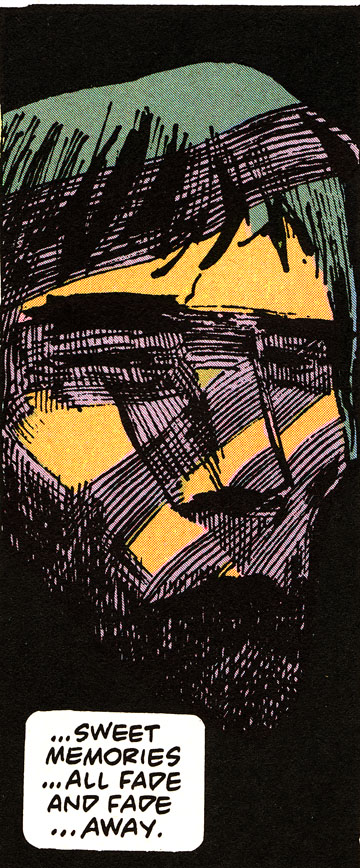
© 2009 - Michel Fiffe

